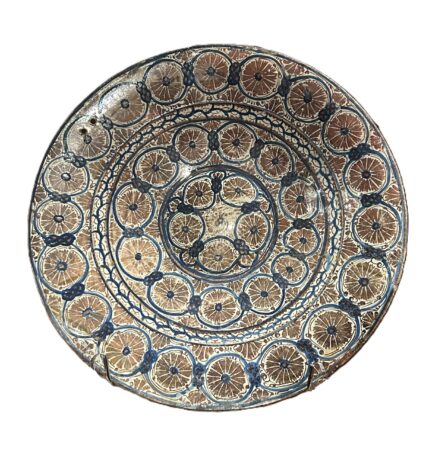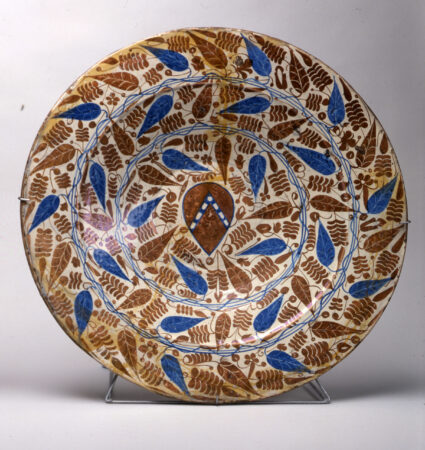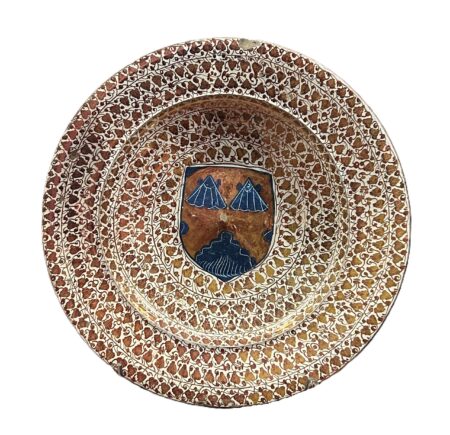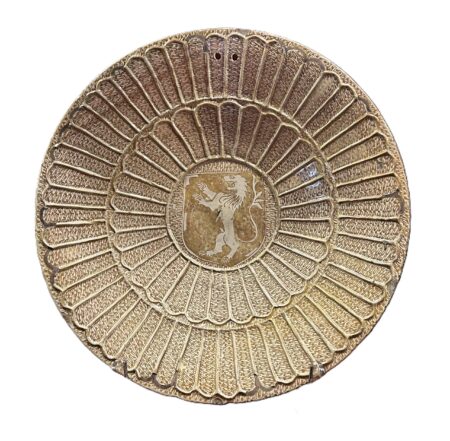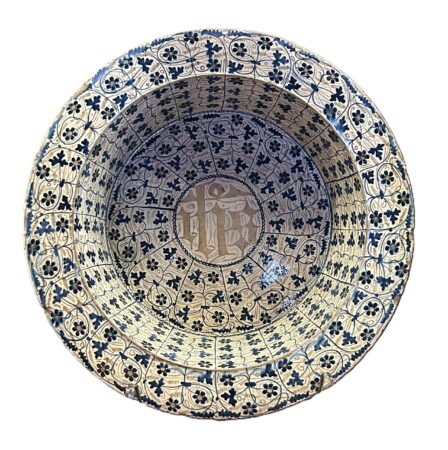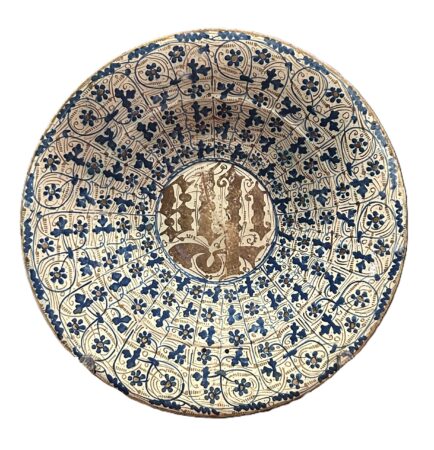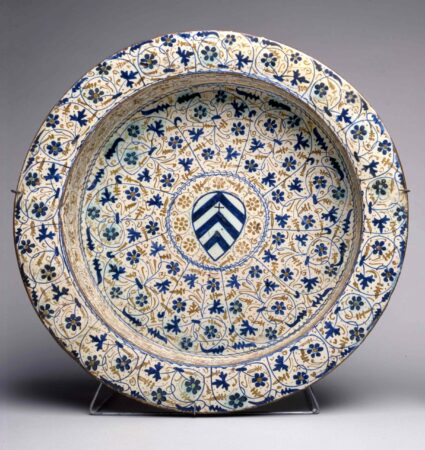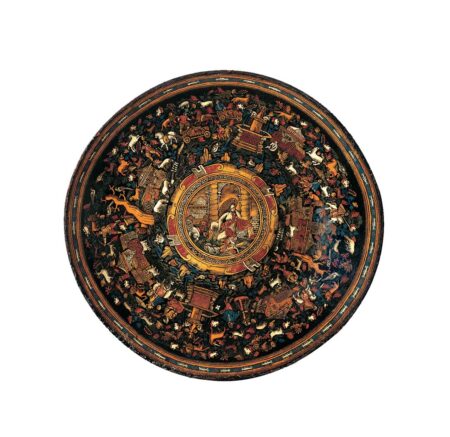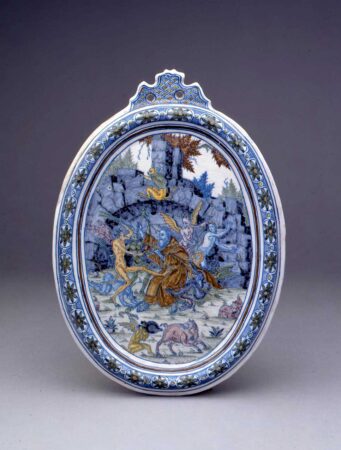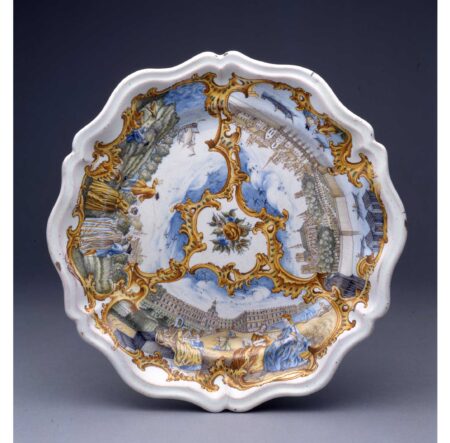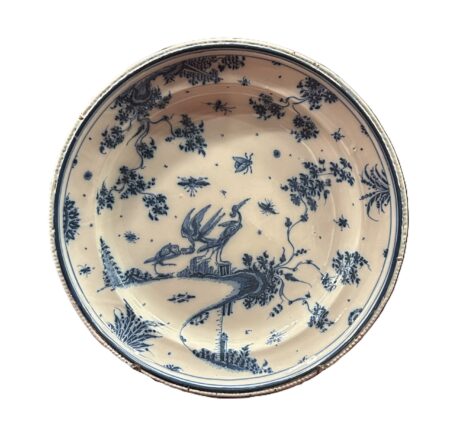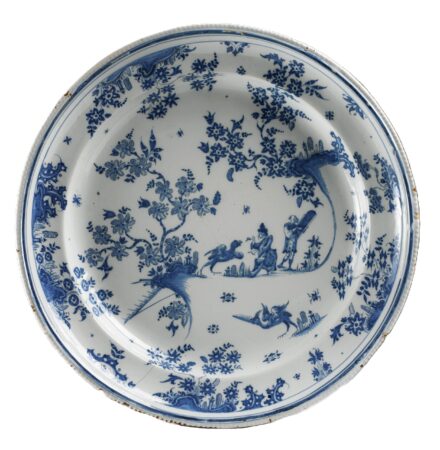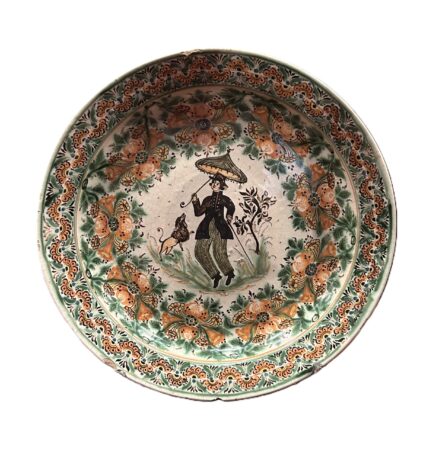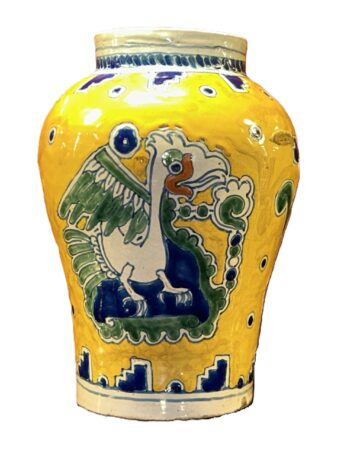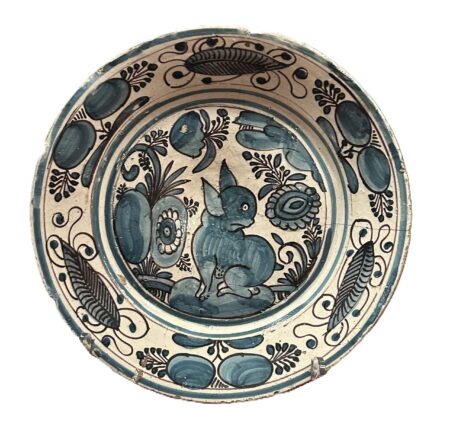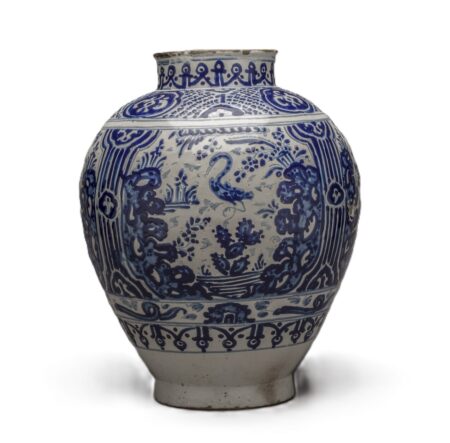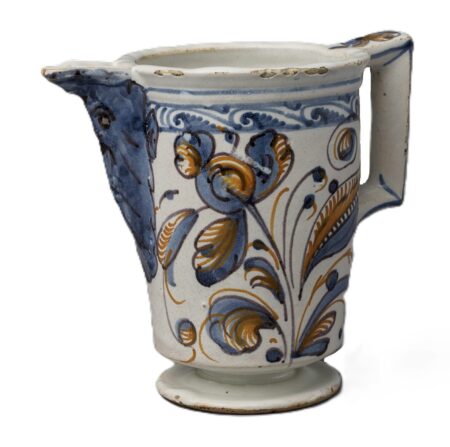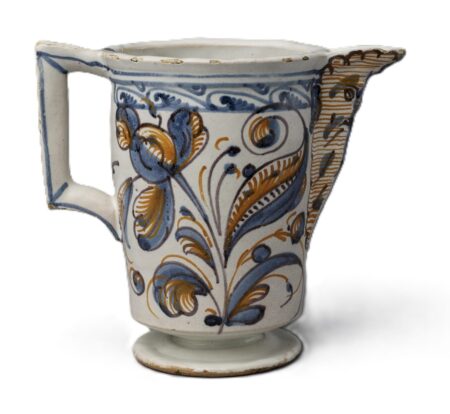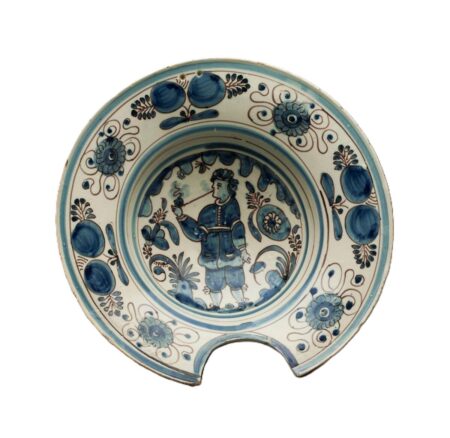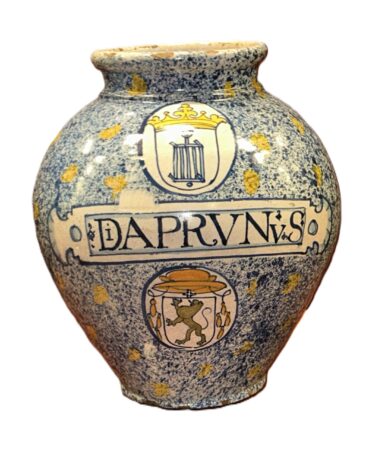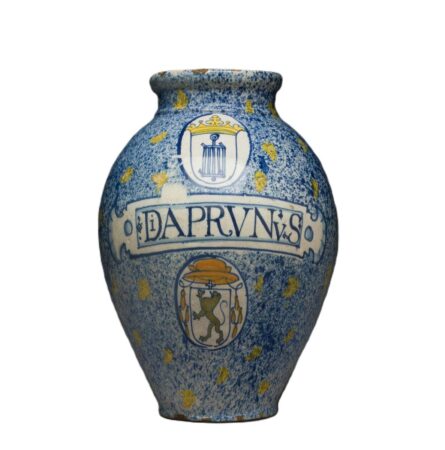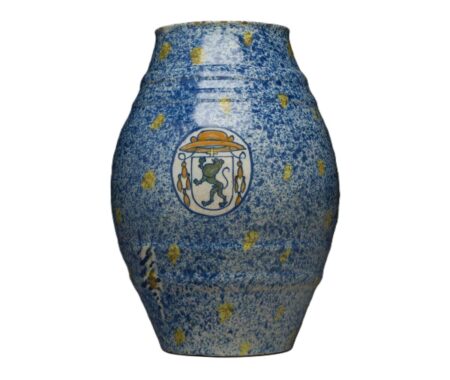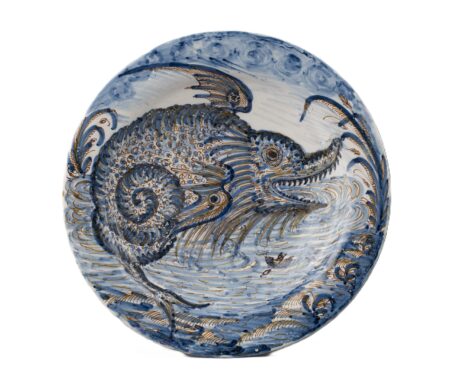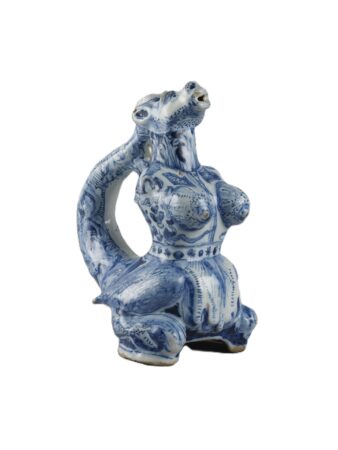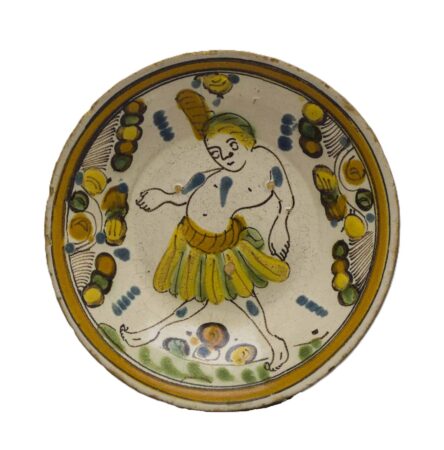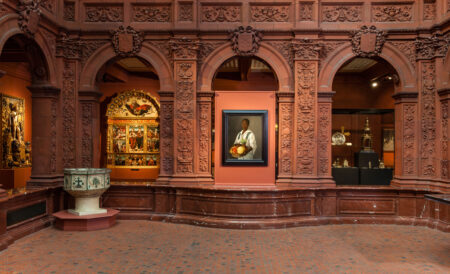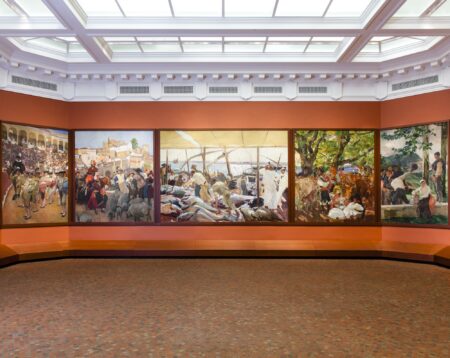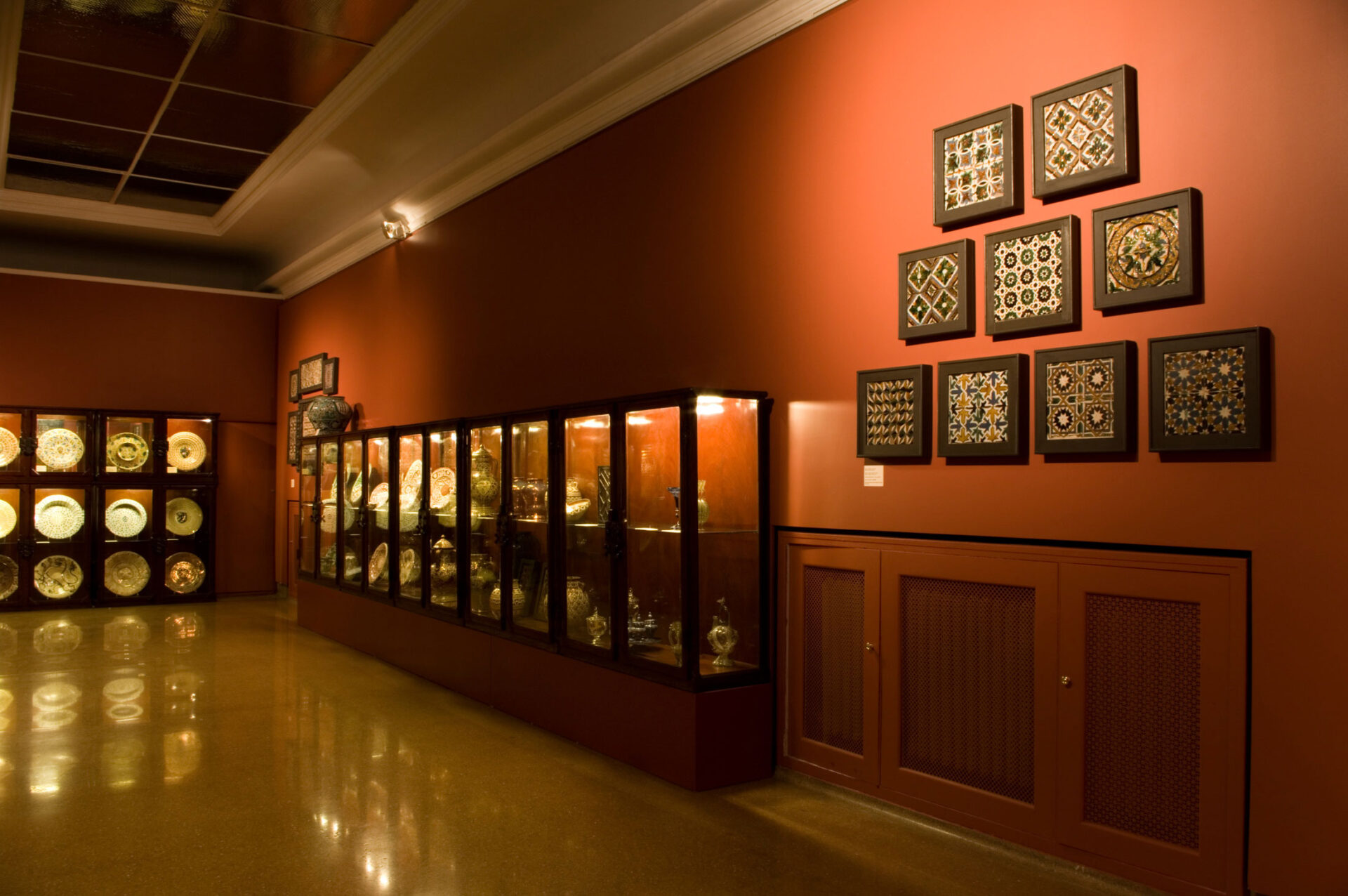
Ceramics Gallery
Ceramics at the Hispanic Society
Inspired by a deep love for the Spanish and Portuguese-speaking world, Hispanic Society founder Archer Milton Huntington (1870–1955) assembled a comprehensive collection celebrating Hispanic culture. Initially focused on archaeological artifacts and books, he expanded his scope to include paintings, decorative arts, and everyday objects. Huntington believed all artifacts—whether grand masterpieces or humble items for everyday use—were essential expressions of material culture. Together with crafts like woodwork, metalwork, glassmaking, and leatherwork, these objects captured the essence of the people’s character. Ceramics, which Huntington described as “creations of the hand and soul,” held a special place in his collection. One of humanity’s oldest industries, ceramics also represent a cornerstone of Iberia’s artistic traditions. Huntington amassed books, catalogs, and articles on the subject, often acquiring small objects as tools for study. He also supported research and publications, including The Industrial Arts in Spain by Juan Facundo Riaño y Montero—one of the first English-language studies of Hispanic ceramics from the 18th and 19th centuries. This era was marked by the founding of royal manufactories by King Carlos III of Spain (1716–1788)—Capodimonte in Naples (1743) and Buen Retiro in Madrid (1759)—key milestones in ceramic production. The Hispanic Society advanced scholarship in this field with its 1915 catalogue documenting 22 pieces from these factories, a subject rarely explored at the time. Additional contributions to ceramic studies include Edwin Atlee Barber’s Hispano-Moresque Pottery (1915) and publications on Mexican maiolica. Alice Wilson Frothingham (1902–1976), curator of ceramics and glass from 1925 to the 1970s, expanded this legacy with her pioneering research. The Hispanic Society’s ceramics collection spans millennia, beginning with Bell Beaker culture pottery dating back 4,000 years, as well as Roman ceramics. The Phoenicians (early settlers in the Iberian Peninsula) first introduced the potter’s wheel in the 9th century BCE, and Roman ceramic production flourished, driven by practical uses such as transporting olive oil and wine. Huntington himself enriched the collection through his archaeological work at Itálica, a Roman city near Seville founded in 206 BCE.
* Denotes works selected by Adriana Varejão in conjunction with the exhibition Adriana Varejão: Don’t Forget, We Come From the Tropics.

